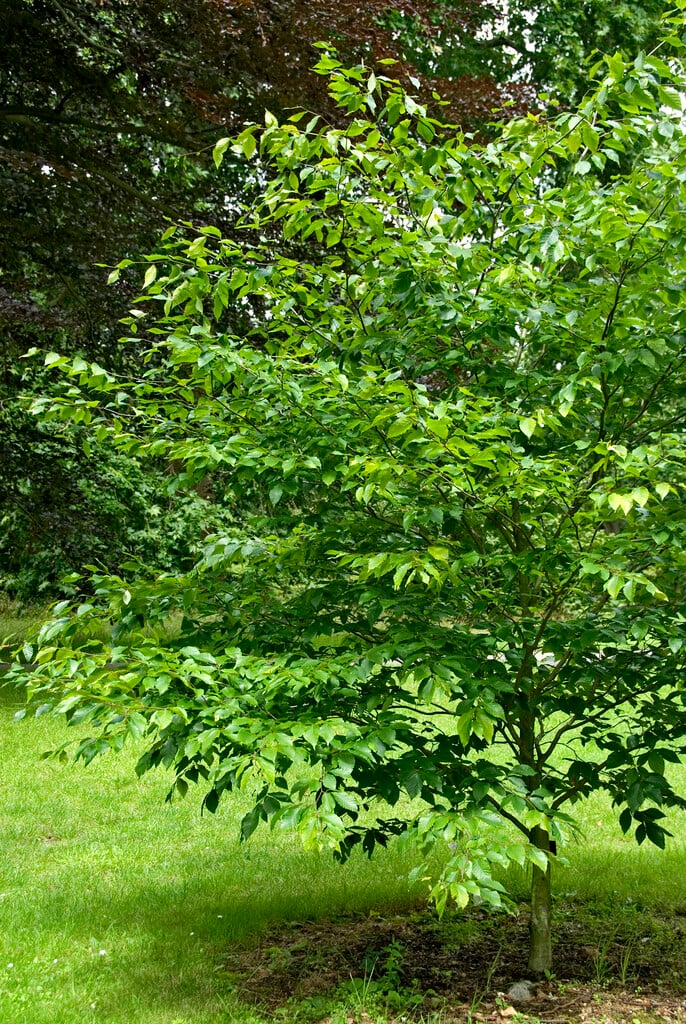Fagus grandifolia
American beech
A slow-growing, medium deciduous tree up to 15m in height. The bark is a smooth silvery-grey and its leaves, as its name suggests, are large, up to 15cm long, green through the summer turning light yellow in autumn. The inconspicuous flowers become bristly-cased nuts in autumn.

Size
Ultimate height
8–12 metresTime to ultimate height
20–50 yearsUltimate spread
Wider than 8 metresGrowing conditions
Moisture
Moist but well–drained, Well–drainedpH
Acid, Alkaline, NeutralColour & scent
| Stem | Flower | Foliage | Fruit | |
| Spring | Green | |||
|---|---|---|---|---|
| Summer | Green | |||
| Autumn | Yellow | Brown | ||
| Winter |
Position
- Full sun
- Partial shade
Aspect
East–facing or North–facing or South–facing or West–facing
Exposure
Sheltered Hardiness
H6Botanical details
- Family
- Fagaceae
- Native to GB / Ireland
- No
- Foliage
- Deciduous
- Habit
- Spreading branched, Suckering
- Potentially harmful
- Pets (dogs): Harmful if eaten. For further information and contact numbers regarding pets, see the HTA guide to potentially harmful plants
- Genus
Fagus are large deciduous trees with smooth grey bark, ovate leaves colouring well in autumn, and inconspicuous flowers followed by usually spiny fruits
- Name status
Correct
- Plant range
- E N America
How to grow
Cultivation
Suitable for large gardens. Grow in any deep fertile soil in good light. For more information see tree cultivation.
Propagation
Propagate by seed. For more advice see our information on how to propagate from seed (tree/shrub
Suggested planting locations and garden types
- Banks and slopes
Pruning
Pests
May be susceptible to aphids and beech scale
Diseases
May be susceptible to beech bark disease, fungi (particulary bracket fungi) and powdery mildews. Sometimes susceptible to honey fungus
Get involved
The Royal Horticultural Society is the UK’s leading gardening charity. We aim to enrich everyone’s life through plants, and make the UK a greener and more beautiful place.